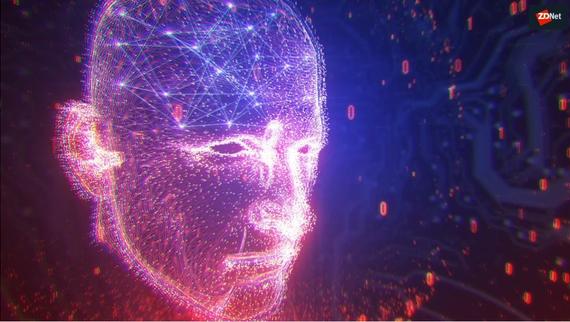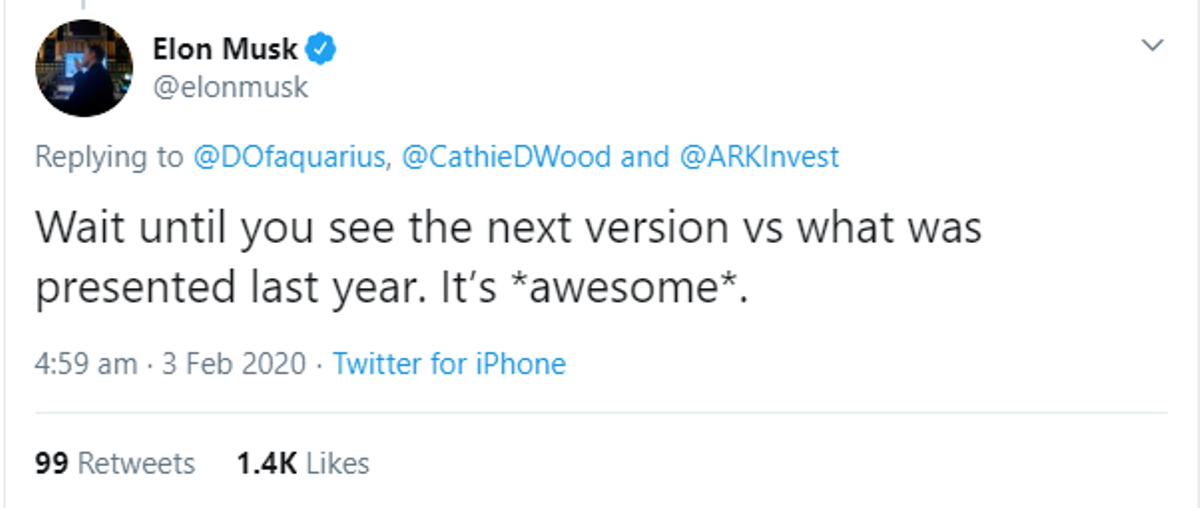Elon Musk’s mind-reading technology could be about to take a big leap forward – ZDNet

The dreams of those who want to connect their brains to computers could be about to take another step towards reality, as Elon Musk took to Twitter to tease an “awesome” update around his neural interface start-up Neuralink.
SEE: 5G: What it means for IoT (ZDNet/TechRepublic special feature) | Download the free PDF version (TechRepublic)
Commenting on the findings of analysis firm ARK, which ranked deep learning as the number one “big idea of 2020”, Musk Tweeted that the impact of high-bandwidth combined with high-precision neural interfaces is “underappreciated”.
“Neuralink may have this in a human as soon as this year,” he added. And then in another Tweet, the Tesla CEO said rather mysteriously: “Wait until you see the next version vs what was presented last year. It’s *awesome*.”

Elon Musk took to Twitter this week to tease an “awesome” update to his 31 million followers.
Image: Twitter
In a presentation a few months ago, Musk effectively pitched the first findings of Neuralink, which he believes down the line will lead to a perfect mesh of humans and artificial intelligence. The three year-old company is working on developing an implantable brain-computer interface (BCI), effectively a way of connecting the human brain to computer devices.
The research team at Neuralink rightly pointed out in a white paper that there are currently two ways to record the activity happening behind our skulls: either non-invasive means, which stay clear of actually entering the brain, but as a result are less accurate; or invasive electrodes, which creep near the cortex but are limited in the scope of the signals they can track.
Musk’s plan is to combine the best of both. To do so, Neuralink has developed threads ten times thinner than human hair, which can be implanted inside the brain to wirelessly monitor neuron activity. A surgical robot, also made by Neuralink, is put in charge of implanting the microscopic threads into brain matter.
Each thread can carry 32 electrodes, and the researchers have demonstrated that the robot can rapidly implement 96 threads. That’s 3,072 electrodes in one brain – “one thousand times more than the best systems out there”, said Musk as he showed off the project.
The only caveat is, the technology hasn’t been tested on real humans yet. Musk said during his last presentation that a monkey had already used Neuralink’s BCI to control a computer with his brain; and the entrepreneur is “aspirationally” hoping to have the interface fitted to a human patient by the end of 2020.
In his tweets Musk acknowledged the obstacles still lying in the way of the technology: “First, we need to make it super safe and easy to use, then determine greatest utility vs risk,” he said. “From initially working to volume production and implantation is a long road.”
If Neuralink’s BCI were to become a reality for humans, Musk believes that the technology could have huge implications for researching, monitoring and potentially treating neurodegenerative diseases such as Parkinson’s or dementia.
An artificial implant could re-establish a connection where neural cabling has died, and let people with brain injuries recover from physical capabilities that have been lost as the result of a stroke, for example.
“It will ultimately be used to make up for entire lost sections of the brain,” said Musk in his Twitter thread. “Don’t want to get too excited, but the potential is truly transformational for restoring brain and motor functions. There is no other way to do it in my opinion.”
Ultimately, what Musk wants to achieve with Neuralink is even bigger: to integrate human and artificial intelligence and have them work in symbiosis. In other words, the Tesla CEO wants to upgrade all of our brains and turn us into enhanced humans – with equal and democratic access to smartness.
For better or for worse, that prospect is still a while away. It is still unclear how advanced the technology currently is. And it’s not the first time Musk has made big claims for Neuralink; he claimed late last year on the Joe Rogan radio show that Neuralink would be “better than anyone thinks is possible” before smoking marijuana.
Musk has not yet won over the skeptics – but we’ll have to wait until summer to find out how close he really is to getting under our brains.






